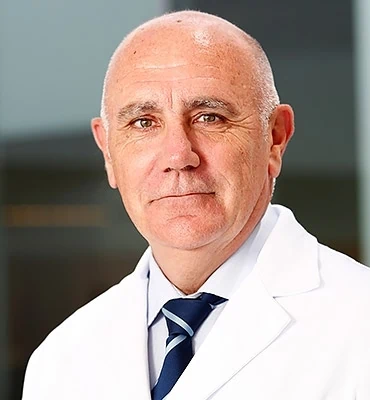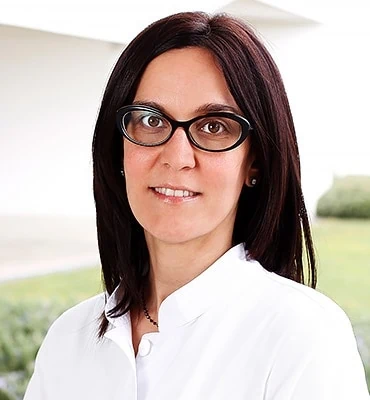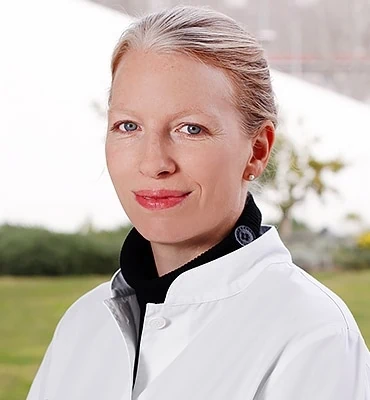
What are refractive errors in children?
Refractive, or optical, errors – myopia, hyperopia and astigmatism – cause blurred vision due to an inability to focus images on the retina. If not corrected, their consequences can be particularly harmful for children, since vision is developed in the first years of life.
Any cause of poor vision in one or both eyes during childhood, as is the case with refractive errors, can lead to the condition known as “lazy eye”. When the child has hyperopia, astigmatism or myopia, the image that reaches the brain is not sharp.
Video in Spanish / When the brain does not receive adequate visual stimuli from the affected eye, it selects the vision from the eye with less refractive error and suppresses or ceases to use the other.
What causes them?
The dioptric power of the eye is determined by two main factors:
- The cornea and crystalline lens: they provide the eye with its convergence ability, since it is through the cornea and lens that light passes and converges to focus the image on the retina
- The axial length: the distance between the anterior and posterior poles of the eyeball, which governs the need for greater or lesser convergence of light, depending on whether the eyeball is longer (myopic) or shorter (hyperopic)
Myopia can increase as the child develops. If the axial length of the eye increases, so does the degree of myopia. In contrast, hyperopia does not increase as the child develops, but can decrease if the eyeball lengthens.
How can they be prevented?
Refractive errors cannot be prevented, but it is important to detect them early (at home, school or at the paediatrician’s).
The problem will then need to be diagnosed by means of an eye examination performed by an ophthalmologist or optometrist. The child’s vision is examined with the aid of dilating eye drops, which prevent the eye from focusing and compensating for the optical error, thus enabling the eye’s optical power to be measured in dioptres.
Symptoms
Parents, teachers and caregivers may notice that the child is having visual difficulties, if the following type of behaviour is exhibited:
- The child needs to hold objects close to the eyes to see them
- Moves in a clumsy way
- Does not notice things happening in the distance
The problem can also be detected after a school or paediatric check-up.
Treatments
Refractive errors are corrected by adding or subtracting focusing power. This can be achieved with corrective lenses in glasses, contact lenses or refractive surgery.
The choice of method depends on the child’s age, type of error and patient needs.
The options should be assessed in conjunction with the parents. Glasses are usually the preferred option.
Specialists who treat this pathology
FAQs
Occasionally, young patients with visual defects cannot follow the class normally, as they have difficulty seeing objects from a distance. This can cause the child to be distracted and lose concentration and interest in continuing with his or her studies. It is, therefore, very important for all children who are underachieving at school to have an eye examination to rule out this possibility.
Accommodation normally needs to be paralysed by applying drops before the eye test can be performed.
Patients who are under the age of five can usually be examined in the same way as adults, but, occasionally, if they are not cooperative and are suffering from a severe eye disease, superficial anaesthesia is necessary to facilitate careful examination.
Obviously, if there is a vision problem, at any age. During their schooling it is obligatory for all children to be examined at the age of four or five to determine their visual ability.
The amblyopic eye has not developed vision correctly, but all eye structures are in good condition. Vision develops from birth, and the eye becomes increasingly more capable of perceiving objects, which is called visual acuity. The amblyopic eye does not develop visual acuity for various reasons. The eye is anatomically correct, i.e. its structures are normal, but vision has not developed.
Ocular occlusion is used to make the diseased eye work harder by patching the healthy one, as in amblyopia. The intensity of the patching of the good eye to develop the vision of the amblyopic eye depends on the degree of vision and the age of the patient.
IMO Institute of Ocular Microsurgery
Josep María Lladó, 3
08035 Barcelona
Phone: (+34) 934 000 700
E-mail: international@imo.es
See map on Google Maps
By car
GPS navigator coordinates:
41º 24’ 38” N – 02º 07’ 29” E
Exit 7 of the Ronda de Dalt (mountain side). The clinic has a car park with more than 200 parking spaces.
By bus
Autobus H2: Rotonda de Bellesguard, parada 1540
Autobus 196: Josep Maria Lladó-Bellesguard, parada 3191
Autobuses H2, 123, 196: Ronda de Dalt – Bellesguard, parada 0071
How to arrive at IMO from:
IMO Madrid
C/ Valle de Pinares Llanos, 3
28035 Madrid
Phone: (+34) 910 783 783
See map in Google Maps
Public transport
Metro Lacoma (líne 7)
Autobuses:
- Lines 49 & 64, stop “Senda del Infante”
- Line N21, stop “Metro Lacoma”
Timetables
Patient care:
Monday to Friday, 8 a.m. to 9 p.m.
IMO Andorra
Av. de les Nacions Unides, 17
AD700 Escaldes-Engordany, Andorra
Phone: (+376) 688 55 44
See map in Google Maps
IMO Manresa
C/ Carrasco i Formiguera, 33 (Baixos)
08242 – Manresa
Tel: (+34) 938 749 160
See map in Google Maps
Public transport
FGC. Line R5 & R50 direction Manresa. Station/Stop: Baixador de Manresa
Timetables
Monday to Friday, 09:00 A.M – 07:00 PM








